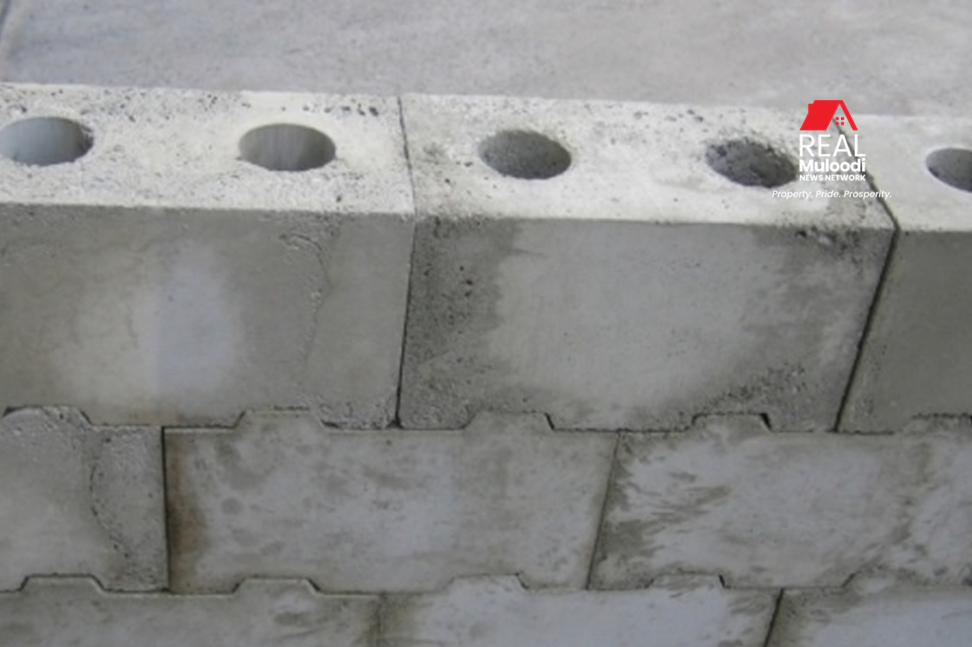UGANDA, Kampala | Real Muloodi News | The demand for affordable housing is on the rise. As such, developers are looking for solutions to lower the cost of construction. Interlocking blocks is one building method that can significantly reduce costs.
Mr Ronald Kasule of Habitat for Humanity-Uganda, a volunteer organisation that supports low-cost housing among vulnerable groups, offers advice on low-cost construction methods that make it easier for people to access decent housing units to address the issues caused by housing inequality and poverty.
Here, he discusses his thoughts on how interlocking blocks is a construction innovation that promotes social-economic and infrastructure growth.
The Low-cost Construction Method
He says that interlocking blocks are a strategy for improving housing affordability, particularly in rural places.
“Away from using mortar and burnt bricks, we use interlocking stabilised soil blocks which require little or no cement for bonding,” he shares.
Ordinary bricks or mortar joints, according to Mr Kasule, use up more cement in the mortar.
“We also implore alternative flooring and walls by using chemicals onto the surfaces,” he adds.
Given its restrictions on manufacturing needs, this method proves to be affordable, which lowers the cost of input and building materials to provide timely and affordable access to homes.
Cost
According to a recent survey, 70% of urban settlements are valued at USh24 million, while rural settlements are worth Ush2 to 13 million, according to the Ministry of Lands, Housing, and Urban Development.
These results show that it is inevitable to address the growing inequities in the housing industry by reducing the price of construction supplies and architectural designs.
According to Kasule, research by UN-Habitat and the Good Earth Trust in Uganda shows that this ISSB approach reduces costs in structural designs.
“In this approach, the cost of walls is lowest and reduced by up to 30 percent as opposed to locally produced fired building bricks,” he tips.
He says that the procedure is time-consuming and expensive since fired construction bricks need to be fired for between 24 and 48 hours.
Is it Practicable?
The East African area, which is renowned for housing a sizable population in rural communities, has mostly embraced ISSB technology.
Kasule claims that numerous already-established communities have accepted affordable housing.
He says, “Previously we have constructed houses for the Bududa landslide victims, Panyadoli settlement in Kiryandongo. We have also constructed model houses in Kumi, and Entebbe and intend to roll out construction of units in Mayuge starting January.”
He adds that the northern areas of Oyam, Lira, and Kole have also sought to build using interlocking blocks.
Tangible Benefits
“This material and method of construction offers low cost and minimal environmental impact. It also provides comparable quality to conventional fired brick construction,” says Kasule.
He argues that because the blocks interlock, less mortar is required and the wall’s structural stability is increased.
In addition to fulfilling its structural purpose, ISSB also helps to keep manufacturing costs as low as possible for vulnerable and low-income populations.
The earth is given extra supplements or pressures to make it more waterproof and sturdy, which gives these blocks their strength.
He says, “the ISSB is reliant and saves a lot of time and money. Compared to ordinary fire blocks which are usually not uniform in size, this technology requires no firing process and is ready for use in 6 hours.”
Because of this method’s environmental friendliness, vulnerable habitats, particularly wetlands and forests, are preserved.
ISSB strategies have empowered communities by selecting youngsters to carry out vocational training in increasing infrastructure growth to enhance homes and livelihoods in disadvantaged areas.
“We recognize the challenges encountered in hindering Ugandans in possessing decent homes as a growing population. Therefore, we need to tackle the issue of unemployment,” he explains.
The goal of the youth centres is to provide enterprises that build capacity and generate cash for housing requirements, along with street business education for women.
People can increase access to affordable homes via innovative, cost-effective building technologies.
Downsides of this Method
Regarding the manufacturing seasons for interlocking blocks, Mr Kasule issues a warning.
He says, “in its making, the rainy season treats the products harshly which deters the block’s stability and strength making it a daunting task to keep structures on their feet.”
The expert promotes making more information and training accessible to communities to improve appropriate housing structures that survive longer to address this issue.
READ MORE LIKE THIS:
Rising Cost of Building Materials Impacts Affordable Housing in Uganda
Over 60 Elderly People get Free Houses from Habitat for Humanity
Precast Construction Technology for Fast, Affordable Housing



